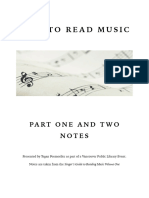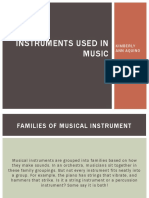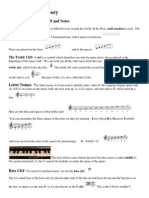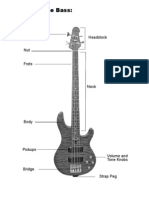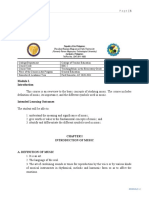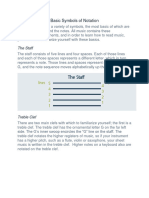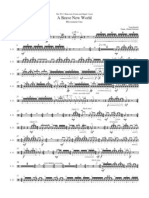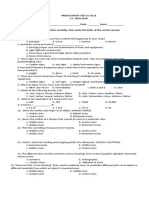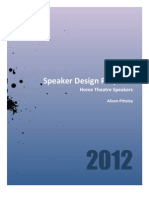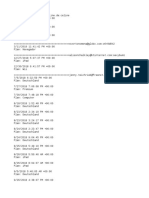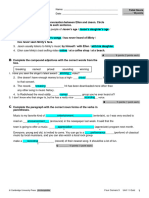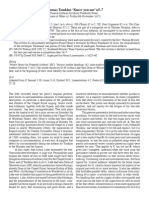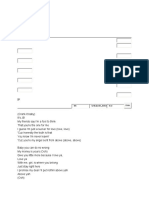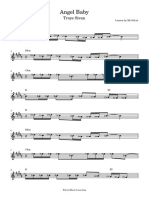0% found this document useful (0 votes)
21 views8 pagesBasics
The document provides an overview of the principal parts of a guitar, including the head, neck, body, and various components such as tuning keys and frets. It also explains the relative value of musical notes, detailing different note forms and their corresponding beats. Additionally, it introduces the concept of the Great Staff for writing music notations and the use of leger lines for notes outside the standard staff range.
Uploaded by
desmond assassinCopyright
© © All Rights Reserved
We take content rights seriously. If you suspect this is your content, claim it here.
Available Formats
Download as PDF, TXT or read online on Scribd
0% found this document useful (0 votes)
21 views8 pagesBasics
The document provides an overview of the principal parts of a guitar, including the head, neck, body, and various components such as tuning keys and frets. It also explains the relative value of musical notes, detailing different note forms and their corresponding beats. Additionally, it introduces the concept of the Great Staff for writing music notations and the use of leger lines for notes outside the standard staff range.
Uploaded by
desmond assassinCopyright
© © All Rights Reserved
We take content rights seriously. If you suspect this is your content, claim it here.
Available Formats
Download as PDF, TXT or read online on Scribd
/ 8










